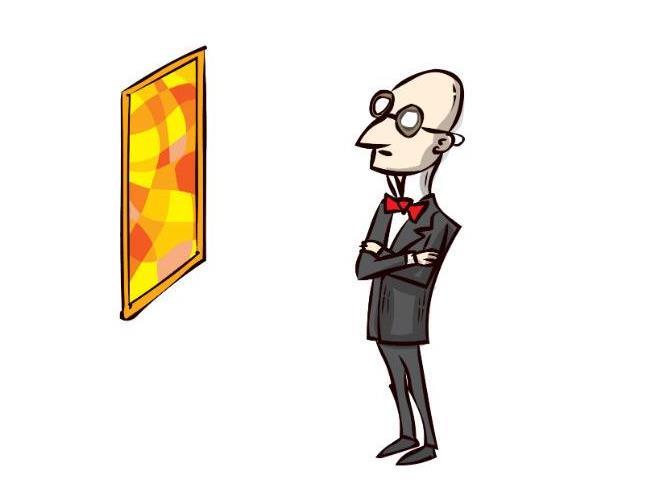What is the state of art criticism in Australia? The short answer is that it is desultory. Guided by stock responses and assumptions, Australian art criticism rarely helps viewers understand the challenges of new work.
The default position usually adopted by radio and television journalists is to read an artist’s work through their biographical details. For them, the artist’s life provides the key to understanding art. This reductive approach sheds almost no light on the art, except in some very unusual circumstances.
Print and online journalism isn’t much better. In Australian newspapers (both broadsheet and tabloid) there is a long tradition of the curmudgeon critic. Usually, these conservative critics have no formal training in art or art history, their chief distinguishing feature is that they are able to hold and express strong opinions. In other words, they have the stomach for dissent. At least on that score they are predictable: they dislike everything that is not modelled on the art of at least two centuries ago.
To continue the typology of Australian art critics, alongside the young or old fogies, there is also the effusive insider. Often these writers are artists, or perhaps it would be more accurate to say they were artists. They are always a part of the art world, which is where they socialise and have friendship ties. They are enthusiastic about art, which is clearly an improvement on the curmudgeon.
But if the curmudgeon is too far away from art, and a constructive approach to its criticism, the insiders are just too close to see clearly. They are not able to perform the crucial task of discrimination. Finally, there’s the press release summariser. Nervous by nature, they tend to be so concerned about not making an error that they make no judgments at all.
Over the years there may have been critics that escape this typology, but these are the main recurrent characters in the mainstream media. It is extremely disappointing that we don’t currently have dazzling art criticism, but then in my living memory we never have had.
Certainly, I haven’t read locally produced art criticism that was truly revelatory in the way that New Yorker critic Peter Schjeldahl’s writing consistently is. Just to give one example, last week I read Schjeldahl’s review in The New Yorker of the Agnes Martin retrospective currently on show at the Guggenheim Museum in New York. It is criticism perfection. He writes beautifully (he is a poet after all), he provides a way to look at Martin’s work that is simply dazzling, and he supplies erudite background on the artist and her difficult life without assigning any superior explanatory power to such biographical details.

In a recent impassioned defence of the role of criticism in The Monthly, theatre critic Alison Croggon has identified the true social, political and cultural costs of the failure to produce and sustain good criticism. Without what she calls the “hinge” between artwork and public that good criticism forges, it is hard to argue for the value of the arts more generally.
At the moment, when advocates for the arts are really crucial, she argues the lack of rigorous criticism is even more keenly felt. Yet, as her article also underscores, we know there is very widespread interest in the arts — there is ample evidence for this in attendance figures and various national surveys. So why is there no vibrant critical culture to support and amplify that interest?
Jane Howard argues Australians simply aren’t interested in the conversation that criticism creates. That is how she concludes her very depressing article in The Guardian titled “Australia’s culture of arts criticism is broken and there’s no clear way to fix it.”
I certainly don’t know how to fix this problem either but I suspect the lack of interest has a lot to do with the so-called negative role of the critic. How often as teachers or critics have we been told that the analysis of books, films and other cultural artefacts spoils people’s pleasure in them? I’ve lost count of the times I’ve heard criticism equated with killjoy negativity.
In her very powerful advocacy of criticism, interestingly, Croggon emphasises the connections critics make: between one work of art and another, between the context of the work and the ideas it might embody. Focusing on connections underscores the constructive role of the critic.

Returning to my favourite critic, what I particularly like about Schjeldahl’s criticism is that it is enabling. He takes something difficult, like Agnes Martin’s paintings, and provides a really superb pathway into looking at them, experiencing them, and thinking about them.
This is the role a theatre friend of mine described as acting like “a window cleaner” for the non-art person. I like the idea of being a window cleaner for the visual arts that I value.
While there is still discrimination here, there is also the amplification of pleasure. Killjoy but also giver of joy; surely that’s a conversation worth having?
Susan Best, Professor of Art Theory and Fine Art, Griffith University
This article was originally published on The Conversation. Read the original article.





